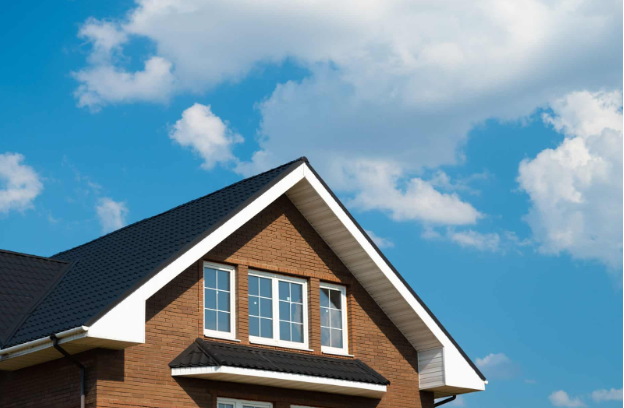Flat vs. Pitched Roof Replacements: Which One Should You Choose?


When it’s time for a new roof, one of the most important decisions a homeowner will face is choosing between a flat or pitched roof design. This decision doesn’t just impact the visual appeal of your home—it also affects cost, durability, maintenance, and energy efficiency. In areas prone to rain, snow, or strong sun, choosing the right roof can significantly influence long-term home comfort and performance. Whether you’re building a new home or planning roof replacements, understanding the pros and cons of each option is essential.
What Is a Flat Roof?
Despite its name, a flat roof isn’t completely level. It has a slight slope to help with drainage, typically around 1/4 inch per foot. Flat roofs are more common on commercial buildings but are gaining popularity in modern residential architecture, especially in urban or minimalist designs.
Pros of Flat Roofs
Flat roofs offer a clean, modern aesthetic that appeals to homeowners looking for contemporary curb appeal. One of the biggest advantages is the usable rooftop space, which can be transformed into a garden, lounge area, or even solar panel installation. They also tend to be less expensive to construct due to reduced material use and simpler structural design.
Cons of Flat Roofs
Drainage can be an issue. Since water doesn’t run off as easily as on a pitched roof, flat roofs are more prone to pooling and leaks. Regular inspection and maintenance are required to prevent issues. Additionally, insulation may be less effective, leading to higher energy bills if not properly addressed during installation.
What Is a Pitched Roof?
Pitched roofs feature a visible slope and are the traditional roofing style seen in most suburban homes. These roofs are especially common in areas with heavy rain or snowfall, as their steep angles allow for efficient water and snow runoff.
Pros of Pitched Roofs
One of the main benefits of pitched roofs is their superior drainage. Water, snow, and debris slide off easily, reducing the likelihood of leaks or water damage. Pitched roofs also tend to last longer and require fewer repairs over time. The attic space under a pitched roof adds insulation and can be used for storage or even additional living space.
Cons of Pitched Roofs
The construction of a pitched roof typically costs more due to the additional materials, labor, and time involved. Maintenance can also be trickier and more dangerous, requiring professional help for even minor issues.
Factors to Consider When Choosing Between Flat and Pitched Roofs
Climate Conditions
If you live in an area with heavy snowfall or frequent rain, a pitched roof is generally the safer, more reliable choice. Flat roofs may work better in dry or moderate climates where drainage isn’t a significant concern.
Budget and Installation
Flat roofs are usually less expensive upfront and quicker to install, making them appealing for homeowners on a budget. However, long-term maintenance costs may add up. Pitched roofs are more costly to install but often come with lower lifetime maintenance expenses.
Design and Aesthetics
Your home’s architectural style should influence your roof choice. Flat roofs look sleek and modern, while pitched roofs offer a classic, timeless look that suits traditional homes. If your goal is to add rooftop features like a terrace or green space, a flat roof provides more functional options.
Maintenance and Repairs
Flat roofs generally require more frequent maintenance to ensure drains and seams remain intact. In contrast, pitched roofs have better longevity and resistance to weather-related damage. For issues like asphalt shingle repair, pitched roofs are easier to inspect and replace individual shingles as needed, especially if the damage is localized.
Long-Term Performance and Durability
Pitched roofs typically outperform flat roofs in terms of longevity. A well-built, pitched roof can last 30 to 50 years or more, especially if constructed with high-quality materials like architectural shingles or metal. Flat roofs, depending on the material, usually last between 15 to 25 years and may need recoating or sealing during that time.
However, material innovations in flat roofing—like TPO, EPDM, and modified bitumen—have improved durability and weather resistance. Homeowners choosing a flat roof today have more reliable and eco-friendly options than in the past.
Which One Is Right for You?
There’s no one-size-fits-all answer. Your decision should be based on the climate, style of home, budget, and how you plan to use the space. Consulting with a qualified roofing contractor can help you weigh your options based on your specific property and preferences.
If maximizing attic space and energy efficiency is a top priority, a pitched roof might be the best solution. On the other hand, if you’re aiming for modern design and rooftop functionality, a flat roof can deliver impressive results with the right materials and installation.
Final Thoughts
Whether you’re updating your current roof or planning for new construction, the choice between flat and pitched roofs involves more than just visual appeal. It’s a practical decision that affects long-term performance, maintenance needs, and your overall investment.
As you weigh your options for roof replacements, take time to evaluate what matters most for your home’s functionality and design. And don’t forget—whether you’re dealing with a flat or pitched surface, timely maintenance like asphalt shingle repair ensures that your roof remains strong, reliable, and ready to face the elements.



